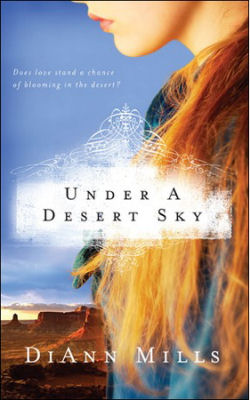
DiAnn Mills believes her readers should “Expect an Adventure.” She is a fiction writer who combines an adventuresome spirit with unforgettable characters to create action-packed novels. Her books have won many awards through American Christian Fiction Writers, and she is the recipient of the Inspirational Reader’s Choice award for 2005, 2007, and 2010. She was a Christy Award finalist in 2008 and a Christy winner in 2010. DiAnn is a founding board member for American Christian Fiction Writers, a member of Inspirational Writers Alive, Advanced Writers and Speakers Association, and is the Craftsman Mentor for the Christian Writer’s Guild. She speaks to various groups and teaches writing workshops. DiAnn and her husband live in Houston, Texas. Visit her website at: www.diannmills.com or find her on Facebook at http://www.facebook.com/diannmills |
|
The Undercurrent of Setting |
|
|
Consider the setting of your novel as an antagonist. Make its traits work against the protagonist reaching her goal. The adversity of setting can be obvious or hidden, but include it in ways that force your character to make tough decisions. For example, a protagonist has a beautiful garden surrounded by a ten-foot stone fence. The garden is her source of tranquility, and she spends hours there. A villain follows her into the garden and traps her inside. She has nowhere to go. Her peaceful domain now becomes her prison cell. Why make life easy for your protagonist? The writer seeks ways to ensure the character changes and grows throughout the novel. This process builds momentum, and using an antagonistic environment challenges all the characters. A writer reveals setting in characterization, plot, dialogue, narrative, symbolism, and emotion. It’s vital, alive, and full of spirit. Establish the time, date, season, and culture of the characters in your story. Use sensory perception to root her into her surroundings. Show just enough detail for the reader to envision the sights, smells, sounds, and tactile experiences. If you tell too much, the reader will skip the description and move on to the action, and the reader might miss an important detail of your story. When the character experiences the setting and the adventure contained there, your reader will experience it too. A character who lives in the setting will not make the same observations as a visitor. Note the emotions that differentiate a seasoned character from a novice in the environment. The seven universal emotions, according to Tonya Reiman in The Power of Body Language, are surprise, fear, anger, sadness, disgust, happiness, and contempt. Move your characters around in the setting and initiate those universal emotions. Use active verbs and strong nouns to pack a powerful punch and show more about your character. The setting in your genre gives your plot definition. Consider a romance set on a Caribbean island. What looks idyllic with sun-kissed days on white-sand beaches and nights filled with the perfume of exotic plants can turn into a nightmare when a tropical storm threatens the safety of the young lovers. What happens in a kingdom far away when a gentle king who provides for his people is replaced by a tyrant who places the people in bondage? In a historical setting, breathtaking mountain peaks become deadly if a wagon train attempts to cross them when the weather can turn inclement. Or the lure of owning property in the West is met by a cattle baron who threatens new settlers. In a sci-fi novel, an isolated, peaceful planet is invaded by aliens who require the inhabitants’ life source. A contemporary setting in a rural community known for its charm and family appeal is hit by a mile-wide tornado. A writer’s best work is one in which she visits the setting. Conducting solid research ensures the writer will have accurate details. Follow this list to make your setting come alive. 1. Visit the area’s Chamber of Commerce. 2. Conduct a Google search of the community or area. 3. Take lots of pictures. 4. Interview the people living in the area. In a historical, this means reading diaries and journals. How has history affected the community? 5. Listen to how the local people talk. Do they have a unique vocabulary? 6. What is the area’s culture? What are their values and expectations? |
7. What is their diet? How do they obtain their food supply? 8. How is the area governed? 9. What are the local restaurants and hotels? 10. What is their source of entertainment? 11. How do they experience the seasons, and what are average temperatures? 12. What are their medical concerns? Is medical care available? 13. Where do the people live? 14. Where do the people shop? 15. How do they dress? 16. Do the arts play a vital role in the community? 17. If the area is near a national or state park, look for research material in the visitor’s section. 18. Know the wildlife and birds of the area. 19. How do the people view education, sports teams, and favorite colleges and universities? 20. How do the people earn a living? 21. Locate a map of the area. 22. Visit the local library. View newspaper archives. 23. Look for documentaries. If your book is a fantasy, sci-fi, or speculative, use the above suggestions to create your story world. Your imagination is your friend. Read the setting of your favorite writers. How can yours be exceptional? If you use a real place, be sensitive to those living there. A writer wouldn’t want to place a serial murder living on a real street in a community or state and possibly damaging prominent people and places. I hope your mind is spinning with possibilities about how to make your setting play an active role in your story. Perhaps completing a character sketch of the area will help you weave a more intricate plot, force your characters to grow, and set the stage for a powerful read. The undercurrent of your setting, where will it take your characters? www.diannmills.com 
|
|
|
|
|
|
|









 A
story’s setting is like an ocean’s undercurrent, keeping your
characters and the plot moving in directions that aren’t always visible
on the surface. Setting is the physical environment of your story. Too
often it’s ignored or given an unimportant role in story preparation.
This article plunges you into the depths of setting and how to make
yours a vital part of your novel.
A
story’s setting is like an ocean’s undercurrent, keeping your
characters and the plot moving in directions that aren’t always visible
on the surface. Setting is the physical environment of your story. Too
often it’s ignored or given an unimportant role in story preparation.
This article plunges you into the depths of setting and how to make
yours a vital part of your novel.